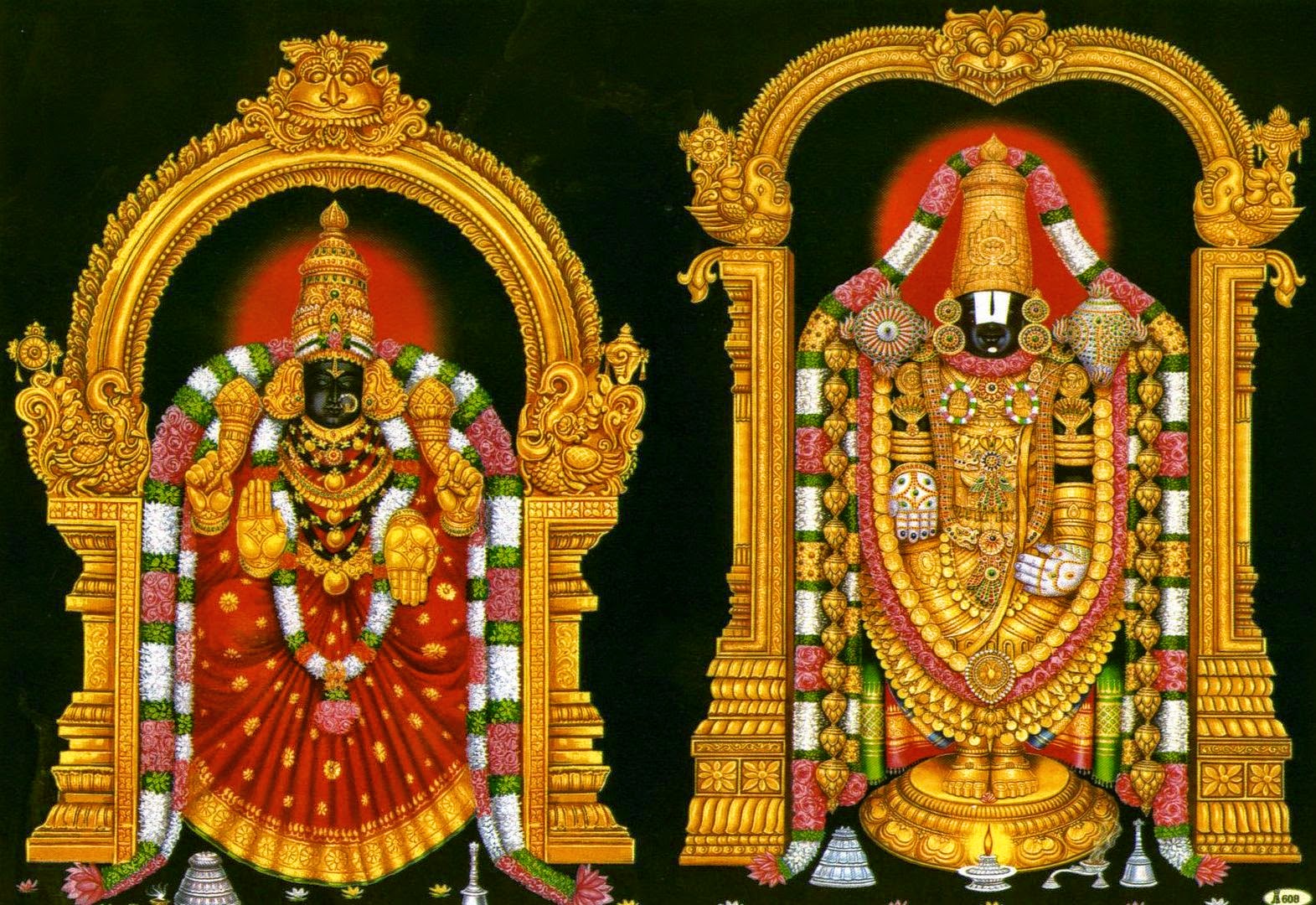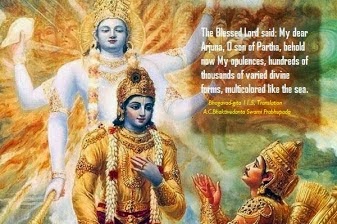Srimad Bhagavadgeeta : Ch-13. Slo-6 & 7
Monday, August 11, 2014.
Srimad Bhagavadgeeta :
Chapter-13. ( Khetra-kshetrajna-vibhaga-yogam )
Slokam- 6&7.
(6)-
Mahabutaniahankarah bhuddhiraviyaktameva ca,
Indriyani dasaikam ca panchendriyagocarah.
Mahabutani = Five elements ( Akasam, vayu, agni, jalam,
bhumi. );
Ahankaram = False ego ( A sense of "karthrutva-
bhoktyatva-abhimanam" );
Bhuddhi Avyaktam = Intelligence, Vasana;
Dhasa indriyani = Ten indriyas;
Ekam = Mind;
Pancha indriya gocarah = Five indriya vishayas ( objects : form,
sound, taste, smell, touch. ), thus, cosisting of 24 tattva-s.
(7)-
Iccha dveshah sukam dukham samkhatascetana drutih,
Etat kshetram samasena savikaramudahrutam.
Etat kshetram = This kshetram ( our body );
Iccha dvesham sukam dukkam = Desire, hatred, joy and sorrow;
Samkhatah cetana drutih = Samkhatam, cetana, and druti;
Savikaram = Thus 7 emotions;
Samasena udahrutam = Briefed to you Arjuna.
The five great elements, false ego, intelligence, the unmanifested, the ten senses, the mind, the five sense objects, desire, hatred, happiness, distress, the aggregate, the life symptoms, and convictions-all these are considered, in summary, to be the field of activities and its interactions.
From all the authoritative statements of the great sages, the Vedic hymns and the aphorisms of the Vedanta-sutra, the components of this world are earth, water, fire, air and ether. These are the five great elements (mahabhuta).
Then there are false ego, intelligence and the unmanifested stage of the three modes of nature.
Then there are five senses for acquiring knowledge: the eyes, ears, nose, tongue and touch.
Then five working senses: voice, legs, hands, the anus and the genitals.
Then, above the senses, there is the mind, which is within and which can be called the sense within.
Therefore, including the mind, there are eleven senses altogether.
Then there are the five objects of the senses: smell, taste, warmth, touch and sound.
Now the aggregate of these twenty-four elements is called the field of activity.
If one makes an analytical study of these twenty-four subjects, then he can very well understand the field of activity.
Then there is desire, hatred, pleasure and pain, which are interactions, representations of the five great elements in the gross body.
The living symptoms, represented by consciousness and conviction, are the manifestation of the subtle body-mind, ego and intelligence. These subtle elements are included within the field of activities.
The five great elements are a gross representation of the subtle false ego. They are a representation in the material conception.
Consciousness is represented by intelligence, of which the unmanifested stage is the three modes of material nature. The unmanifested three modes of material nature is called pradhana.
One who desires to know the twenty-four elements in detail along with their interactions should study the philosophy in more detail. In Bhagavadgeeta, a summary only is given.
The body is the representation of all these factors, and there are changes of the body, which are six in number: the body is born, it grows, it stays, it produces by-products, then begins to decay, and at the last stage it vanishes.
Therefore the field ( Kshetram or our body ) is a non permanent material thing. However, the kshetrajnan, the Lord, is different.
Now Lord Krishna speaks of the characteristics and nature of the kshetram or field of activity beginning with the words maha-bhutani meaning the five fundamental elements being earth, water, fire, air and ether.
These are the elements comprising material existence and these are the elements that constitute the physical body.
Ahankarah is the false ego, buddhi is the intellect, avyaktam is the unmanifest nature known as prakriti the material substratum pervading all physical existence.
The five organs of perception for the senses being the five senses: eye, ears, nose, tongue and skin.
The five objects of the senses being sight ( form ), sound, smell, taste and touch and the five organs of action being the hands, the legs, the voice, the genitals for procreation and the anus for evacuation.
These 24 elements have already been iterated by Lord Krishna millenniums before in His lila avatar or pastime incarnation as Kapila deva; but here He also names the modifications such as desire and aversion as well.
Desire is attachment to that which gives happiness and repugnance is aversion to that which gives misery.
Both are mental tendencies formed from a conditioned perception of what is favourable and unfavourable relegated by the karma or reactions to one's meritorious and unmeritorious actions and as they are caused by the actions of the physical body they are experienced by the jiva or embodied being through contact of the physical body as it is the receptacle of feeling for all jivas.
The word cetana meaning awareness is apparent in all forms and species of life relative to their individual consciousness.
This starts with being conscious of food only to being conscious of life with its six transformations of birth, infancy, youth, maturity, old age and death; to being conscious of the atma or the immortal soul, to being conscious of a Supreme Lord to being conscious of loving devotion to the Supreme Lord Krishna.
All these things have been explained in brief as being part of the kshetra along with the mind, the senses, the objects of the senses and the modifications of desire and aversion which causes the sensations of pleasure and pain for the jivas.




Comments